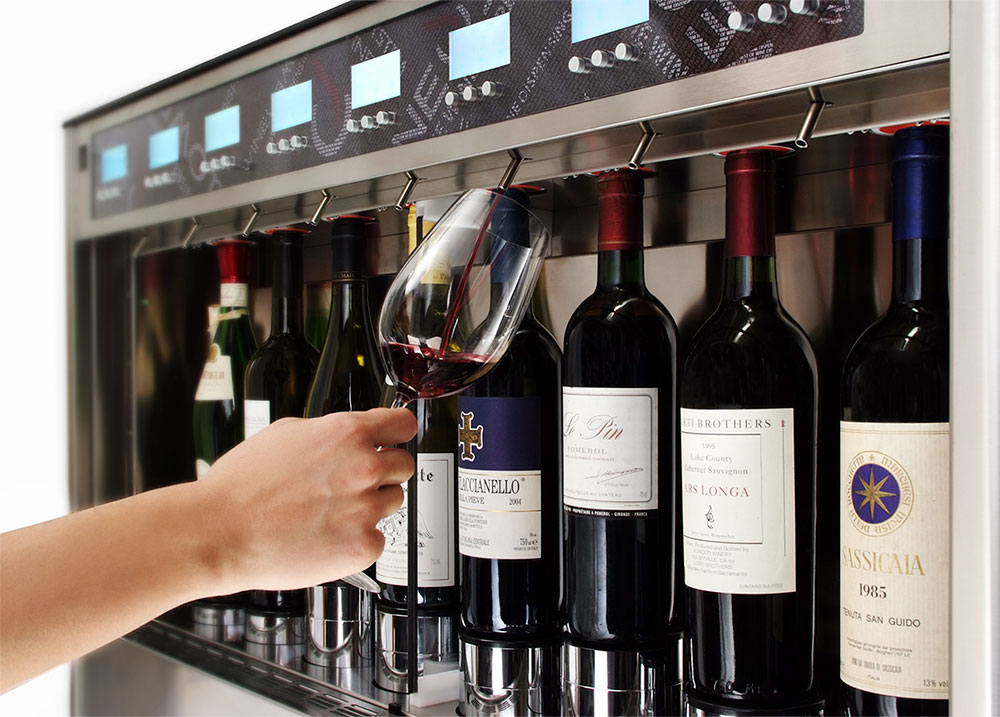
Wouldn’t you like to offer that $120 bottle of cab in your “by-the-glass” program without discarding the second half of the bottle into next week’s red sangria? Wine dispensers can help to make this possible.
To view the article in its original form at The Independent Restaurateur Click Here
It’s no secret, premium wine-by-the-glass selections earn the highest margins. That is, if you sell the whole bottle. More expensive wines are typically reserved for full-bottle purchase, keeping restaurateurs from the lucrative perks of by-the-glass orders.
There are two major factors that inhibit restaurateurs from maximizing their wine program: spoilage and waste.
Wine has a short shelf life after opening. Two to three days is the typical window to sell an open bottle without compromising the integrity of the wine. Premium bottles are much more likely to hit the max shelf life, since they simply don’t sell as fast as “house wines.”
Many gadgets on the market slow the oxidation process. Effectiveness and prices on these products can vary greatly. A simple web search reveals devices ranging from $10 to $1000+! An important feature to keep in mind is the simplicity of pouring: individual bottle devices can be cumbersome and slow the serving process.
A popular technology used in high-volume restaurants and bars is the commercial wine dispenser. On average, these machines preserve open wine for 30 days and dispense at the push of a button. Food-grade argon gas preserves up to eight wines individually, eliminating oxidation and cross vapor contamination. This gives ample time to sell the entire bottle without discounting or sacrificing to alternative concoctions (e.g. the aforementioned sangria bowl).
The elasticity of discretionary purchases, such as a premium glass of wine, heavily dictates the maximum price one can offer to a consumer. Price per glass is carefully calculated for each wine, typically leaving little room for waste. For example, if you calculate five 5-ounce glasses at $19/glass from one 750 ml bottle, that leaves you with 0.3 ounces of excess. Over-pour on the first four glasses, and you may miss out on that fifth $19 glass. In some cases, that could be the entire profit (after all expenses).
Customers love a heavy pour, but it can be detrimental to the bottom line. Some bartenders meticulously measure each serving, but this can turn off patrons, invoking a feeling of being “nickel-and-dimed.” If you are going to measure each serving, it needs to be a seamless process. Like spoilage, there are several devices that can increase consistency in the amount of each pour.
A wine dispensing system is programmable to serve the exact amount intended over time. Some models are capable of calibrating up to three different sizes, offering consumers a sample, half-glass, and full-glass option. Ultimately, portioning is up to the restaurateur’s discretion.
There are several ways to limit waste and spoilage. From low-tech to high-tech, a wine dispenser is one of the most consistent and reliable methods, with various other valuable features. It can be a significant investment, but the technology frees restaurateurs to choose wines that best complement their menu, brand, and income statement, instead of succumbing to the restrictions of economics.
WineEmotion™ was created by Riccardo Gosi, the internationally-renowned creator of modern-day wine dispensing systems that have transformed how wine is sold and served worldwide since 2003. WineEmotion is the product evolution of Gosi’s original unparalleled design, enhanced with modern appeal, functionality, and uncompromising reliability.